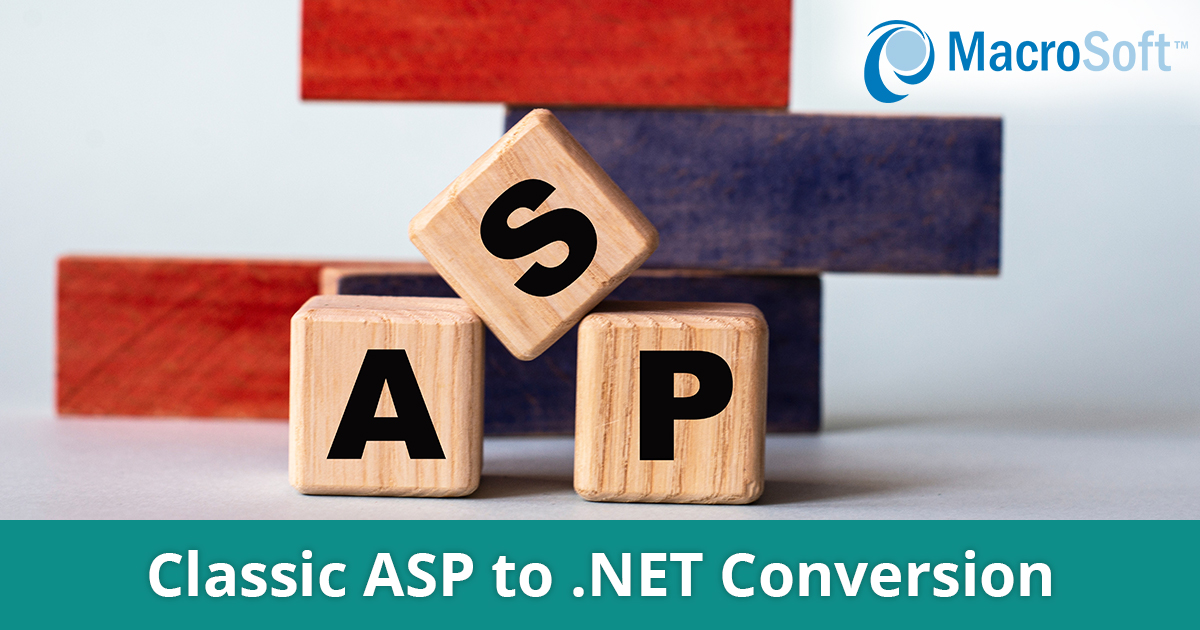
By John Kullmann | Published on February 2nd, 2022 | Last updated on February 8th, 2022 |
Classic ASP, or Active Server Pages, was Microsoft’s first server-side scripting language and engine. It was released in December of 1996, initially as an add-on to Internet Information Services or IIS. It used scripting on the server to create content that would then be sent to a client’s web browser, and as a result it enjoyed a tremendous amount of success.
Classic ASP, however, is no longer being developed by Microsoft at all – it has long since been replaced by ASP.NET in 2002, a newer alternative. Because of that, businesses with these applications must rewrite them using modern technology like ASP.NET not only for supportability but to also enjoy the scalability and the security that Classic ASP always notably lacked.
Classic ASP and ASP.NET are very different technologies, and until a few years ago, that difference became evident through the development model choices. It is a control-based event-driven development model that resonates most with Windows Forms developers. It offers a steep learning curve for developers who are used to working with HTTP, HTML, and CSS as most of these basic web development technologies are abstracted away behind event handlers, server controls, and other platform-specific artifacts.
ASP.NET was introduced to provide developers with more control over the basic web technologies and a separated architecture that lends itself very well to unit testing.
At this point, Classic ASP is 20-year-old technology – and it wasn’t necessarily an ideal solution in the first place for many organizations. There are several limitations with Classic ASP that, at this point, have thankfully been fixed by ASP.NET. The story goes that Bill Gates was caught off guard by the internet in the mid-1990s. But as soon as he realized the earth-shattering implications of the internet, it was all hands-on deck and Microsoft rushed Classic ASP into production even though it was less than stellar. Even in the early days of Classic ASP, Microsoft understood its weaknesses and immediately started working on its replacement, ASP.NET.
Classic ASP was not a compiled scripting language, and instead was interpreted. This means it runs slowly and risks breaking if there is a syntax error somewhere in the code. It also lacked debug support, meaning that debugging was always something you had to do via trial and error.
The process of converting a Classic ASP application to ASP.NET isn’t necessarily difficult, but it does require businesses to keep a few key things in mind. For starters, understand that you’ll be dealing with a complete rewrite of the application from the ground up, there is no one button “conversion utility”. You can use the old Classic ASP application as a model for the functionality of your newer equivalent, then model the capabilities and use-cases by a user in the new application.
There are two possible routes to the migration:
Millions of websites and browser-based applications are used with Classic ASP within their underlined application. It means that you are no longer in a supported application, and you need to ensure its Security and Functionality for your continued client use as well as for your internal business use.
Macrosoft addresses the below issues but first what Macrosoft offers is a free evaluation of your classic ASP to see what needs to be done, if anything at all. Please contact Macrosoft to learn more about our services and how we can support your Classic ASP Applications.
Macrosoft addresses large Classic ASP application issues, for companies who are considering migrating to ASP.NET. Contact Macrosoft today itself to get a free quote on your Classic ASP migration project.